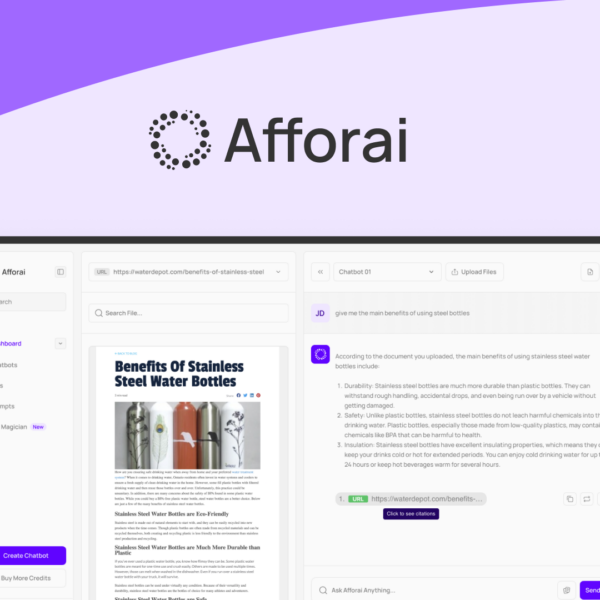In the world of SaaS, understanding SaaS failures is crucial for success. With a staggering 90% failure rate among startups, knowing the pitfalls is essential. What can founders do to thrive instead of becoming just another statistic? Let’s dive in!
Introduction: The Hard Truth About SaaS Startup Failures
SaaS startups face a tough journey. Many dream big, but the reality is that about 90% fail. This doesn’t mean you shouldn’t try but rather that you need to know the challenges ahead. The road to success can be bumpy, so understanding the obstacles is key.
Understanding the Landscape
Every successful SaaS has a story. They often start with a unique idea or better service. But without the right planning and execution, these ideas can flop. It’s important to talk to others in the industry and learn from their experiences.
Identifying Common Pitfalls
Some failures come from not knowing your customers. If you don’t know what they want, how can you provide it? Research your target audience. Gather feedback and adjust. Recognizing mistakes early can save time and money.
Bouncing Back from Setbacks
Every failure can be a lesson. If something doesn’t work, it’s not the end. Taking time to understand what went wrong allows you to improve. Many SaaS leaders embrace failures as stepping stones to their success.
Being aware of these hard truths can prepare you for what’s ahead. You’re not just building software; you’re creating solutions that need to connect with real people. Keep your eyes open, learn, and adapt.
Main Reasons SaaS Startups Fail

SaaS startups struggle for many reasons. Understanding these reasons helps new founders avoid common traps. Let’s look at the main issues.
Poor Product-Market Fit
One big reason for failure is a poor product-market fit. This happens when a startup builds something nobody wants or needs. It’s crucial to listen to customer feedback and adapt the product to real needs.
Cash Flow Problems
Many startups fail because of cash flow issues. Even if a business has great ideas, it needs money to keep running. Monitor expenses closely, and create budgets to manage funds wisely.
High Customer Churn
Customer churn refers to losing clients faster than gaining new ones. This can happen due to poor service or a lack of engagement. Building strong relationships with existing customers helps keep them around.
Lack of a Clear Strategy
Another key reason for failure is not having a clear strategy. Startups should know their goals, target audience, and how to reach them. A well-defined plan gives direction and keeps teams focused.
Each of these reasons highlights the need for careful planning and execution. By recognizing these pitfalls, SaaS startups can better prepare and increase their chances of success.
Understanding Bad Product-Market Fit
Understanding bad product-market fit is key for SaaS success. It means your product doesn’t meet the needs of your customers. This can lead to low sales and customer rejection.
What is Product-Market Fit?
Product-market fit happens when your service fills a gap in the market. When users find value, they stick around. If not, it’s a sign to rethink your approach.
Signs of Bad Product-Market Fit
One clear sign is low user engagement. If customers aren’t using your software regularly, something’s wrong. Also, high churn rates indicate customers aren’t finding enough value.
How to Fix it
Start by gathering feedback. Ask customers what they like and dislike. Use surveys or interviews to get honest opinions. Then, make necessary adjustments based on their input.
Learn and Adapt
Remember, bad product-market fit isn’t the end. Many successful companies faced it early on. The key is to stay flexible and willing to change your product as needed.
Addressing the issue of product-market fit can greatly improve your chances of success. By keeping customers happy with a suitable product, you can build a loyal user base.
Addressing Cash Flow Issues and Burn Rates

Addressing cash flow issues is vital for SaaS startup survival. Cash flow refers to the money coming in and going out of your business. If expenses exceed income, trouble can arise quickly.
Understanding Burn Rate
Burn rate is how fast you spend money compared to your income. A high burn rate can lead to financial problems. Keep track of this number to avoid running out of cash too soon.
Tracking Your Cash Flow
Regularly monitor your cash flow. Create a simple cash flow statement to see inflows and outflows. This helps identify problems before they become serious.
Cutting Unnecessary Expenses
If cash flow is tight, look for ways to cut costs. This might mean reducing marketing spend or renegotiating contracts with suppliers. Every little bit helps keep your business afloat.
Increasing Revenue
To improve cash flow, you can also focus on increasing revenue. Consider offering promotions, upselling, or improving sales tactics. A few extra sales can make a big difference.
By being proactive with cash flow and burn rates, you can steer your startup toward a more stable future. Knowing where your money goes empowers better decision-making.
Crafting a Strong Go-to-Market Strategy
Crafting a strong go-to-market strategy is crucial for any SaaS startup. This plan helps guide your product’s launch and growth. It outlines how to reach your customers effectively.
Identifying Your Target Audience
Start by identifying your target audience. Know who will benefit most from your product. Create buyer personas to understand their needs, behaviors, and preferences.
Defining Your Unique Value Proposition
Your unique value proposition (UVP) sets you apart from competitors. It answers why customers should choose your product. Make sure it’s clear and appealing to your target audience.
Choosing the Right Marketing Channels
Next, select the right marketing channels. Social media, email, and online ads can be effective. Consider where your audience spends their time and how they prefer to receive information.
Creating a Sales Strategy
A strong sales strategy is also essential. Decide whether to use direct sales, partnerships, or online sales. Train your sales team on how to communicate the value of your product.
Measuring and Adjusting
After launching, measure your results. Look at key metrics like customer acquisition cost and conversion rates. Use this data to tweak your strategy as necessary.
By crafting a strong go-to-market strategy, you can successfully introduce your SaaS product to the world. This foundation helps you attract and retain customers, driving long-term success.
Tackling Customer Churn Head-On

Tackling customer churn is vital for any SaaS startup. Customer churn refers to losing clients over time. High churn rates can hurt your business, so it’s important to address the issue directly.
Understanding Customer Churn
First, understand why customers leave. Common reasons include poor service, lack of value, or better competitors. Gathering customer feedback helps identify these issues.
Improving Customer Engagement
Improving engagement can reduce churn. Regular check-ins with customers through emails, calls, or surveys keep them involved. Make them feel valued and appreciated.
Providing Excellent Support
Offer outstanding customer support. Quick responses and helpful resources make a difference. A knowledgeable support team can solve issues before they escalate.
Loyalty Programs and Incentives
Loyalty programs can also help. Offer discounts, rewards, or exclusive content to retain users. Customers are more likely to stick around when they feel rewarded.
Regularly Analyzing Metrics
Set up metrics to track churn and engagement. Analyzing data helps you find patterns in customer behavior. Use this information to make informed changes in your strategy.
By tackling customer churn head-on, you improve satisfaction and increase retention. Keeping your customers happy ensures long-term growth and success for your SaaS business.
Overcoming Founder Conflict and Team Issues
Overcoming founder conflict and team issues is crucial for startup success. Disagreements among founders can lead to setbacks. It’s important to address these conflicts early.
Understanding the Root Causes
First, understand why conflicts arise. Common causes include differing visions, stress, and communication problems. Acknowledging the issues helps in finding solutions.
Improving Communication
Effective communication is key to resolving conflicts. Hold regular meetings where everyone can speak openly. Encourage team members to share their thoughts without fear of backlash.
Establishing Clear Roles
Establish clear roles and responsibilities within the team. When everyone knows their tasks, it reduces overlap. This clarity helps prevent misunderstandings and conflicts.
Conflict Resolution Strategies
When conflicts arise, use conflict resolution strategies. Try to mediate discussions between parties involved. Focus on finding a compromise that works for everyone.
Fostering a Positive Culture
Fostering a positive company culture can minimize conflicts. Encourage teamwork, respect, and support among team members. Happy teams are less likely to experience conflicts.
By addressing founder conflict and team issues head-on, startups can create a healthier work environment. This leads to better collaboration and, ultimately, greater success.
Learning from Successful SaaS Companies

Learning from successful SaaS companies can provide valuable insights for new startups. These companies have already faced many challenges and learned key lessons along the way.
Studying Their Business Models
First, look at their business models. Successful SaaS companies often have clear pricing strategies. Understanding different pricing tiers can help you attract various customer segments.
Focusing on Customer Experience
Customer experience is another area to consider. Great SaaS companies invest in making their users happy. They listen to feedback and continuously improve their services based on user needs.
Effective Marketing Strategies
Examine their marketing strategies too. Successful companies often use content marketing and social media to reach customers. Learning how they engage their audience can inspire your marketing plans.
Building Strong Teams
Additionally, strong teams are a common trait. These companies prioritize hiring skilled talent and fostering a positive work culture. A motivated team drives innovation and growth.
Embracing Change and Innovation
Finally, successful SaaS companies embrace change. They adapt to market trends and invest in new technologies. Staying ahead of the curve helps them remain competitive.
By learning from the best, you can avoid common pitfalls and create a robust SaaS business that thrives in the marketplace.
How to Validate Your Product-Market Fit
Validating your product-market fit is essential for any SaaS startup. This process ensures your product meets the needs of your target market. Here are some effective ways to do it.
Conducting Market Research
Start with thorough market research. Understand your potential customers’ pain points and desires. Surveys and interviews can provide valuable insights directly from users.
Creating Minimum Viable Products (MVPs)
Next, consider developing a minimum viable product (MVP). An MVP is a basic version of your product with little features. It allows you to test your idea quickly and cost-effectively.
Gathering User Feedback
Once you have your MVP, gather user feedback. Ask customers what they like and what needs improvement. Their input is critical for making adjustments that enhance product-market fit.
Analyzing Metrics
Keep an eye on key performance metrics. Look at user engagement, retention rates, and conversion rates. These numbers help you measure how well your product resonates with users.
Iterating Based on Insights
Finally, be ready to iterate based on what you learn. Make changes to your product as needed, and continue to test its fit in the market. Flexibility is key to finding the right product-market fit.
Validating your product-market fit takes effort but is crucial for long-term success. By following these steps, you can create a product that truly serves its intended audience.
Smart Financial Management for Startups

Smart financial management is crucial for startups. Good money management helps ensure your business stays afloat. Here are key strategies for effective financial management.
Creating a Budget
A solid budget is your starting point. List all your expected costs and income. This gives you a clear picture of your finances.
Monitoring Cash Flow
Regularly monitor your cash flow. Keep track of all incoming and outgoing money. Understanding your cash flow helps you avoid funding issues.
Cutting Unnecessary Expenses
Look for ways to cut costs. Identify non-essential expenses and eliminate them. This can free up funds for other essential areas.
Seeking Funding Wisely
If you need extra cash, explore funding options. Consider loans, grants, and investments wisely. Understand the terms and impact on your business.
Tracking Key Financial Metrics
Stay on top of key financial metrics. Monitor your profit margins, return on investment, and burn rate. This data helps you make informed decisions.
Consulting Financial Experts
Don’t hesitate to consult financial experts. A good accountant can provide insights to improve your financial health. Expert advice is invaluable for any growing startup.
By practicing smart financial management, you can pave the way for a successful startup. Take control of your finances to boost growth and stability.
Developing an Effective Market Entry Plan
Developing an effective market entry plan is crucial for your startup’s success. A well-thought-out plan helps you understand the market and how to approach it.
Market Research
Start with thorough market research. Identify your target audience and their needs. Analyze your competition to see what works and what doesn’t.
Defining Your Unique Selling Proposition
Clearly define your unique selling proposition (USP). This is what sets you apart from competitors. Make sure your USP addresses your audience’s pain points.
Choosing the Right Channels
Select the right channels for reaching your audience. Consider social media, email, or traditional marketing. Each channel has its benefits depending on your target market.
Setting Pricing Strategies
Establish pricing strategies that reflect your value. Ensure your prices are competitive but also cover costs. Offering diverse pricing options can attract more customers.
Creating a Launch Timeline
Create a clear launch timeline. This will help you manage tasks and stay organized. Make sure to set goals and deadlines for each step.
Gathering Feedback
After launching, gather feedback from early users. Their insights can help you improve your product and approach. Use this information to tweak your strategy as necessary.
An effective market entry plan sets the foundation for growth. It helps you navigate challenges and connect better with your audience.
Prioritizing Customer Retention Techniques

Prioritizing customer retention techniques is essential for business growth. Keeping existing customers is often easier and cheaper than acquiring new ones.
Understanding Customer Needs
First, understand your customers’ needs and preferences. Regularly gather feedback through surveys and direct conversations. This insight helps you provide better products and services.
Providing Excellent Customer Service
Offer top-notch customer service at all times. Quick responses and friendly support make customers feel valued. Happy customers are more likely to stay with your brand.
Loyalty Programs
Implement loyalty programs to reward repeat customers. Offer discounts, exclusive content, or rewards for continued business. These incentives can help strengthen customer loyalty.
Regularly Engaging Customers
Engage with customers on social media and via email. Share valuable content that interests them. This keeps your brand top-of-mind and fosters connections.
Monitoring Customer Analytics
Keep an eye on customer analytics. Understand purchase patterns and engagement levels. This data helps you tailor your retention strategies effectively.
Personalizing Experiences
Personalization can greatly enhance customer retention. Use data to tailor recommendations and offers. Customers appreciate when brands cater to their individual needs.
By prioritizing customer retention techniques, businesses can build long-term relationships. These relationships lead to steady revenue and a loyal customer base.
Building the Right Team and Culture
Building the right team and culture is key to a startup’s success. A strong team can drive a company forward.
Hiring the Right People
Start by hiring individuals who share your vision. Look for candidates that align with your values and mission. A good fit enhances team dynamics.
Encouraging Open Communication
Foster a culture of open communication. Encourage team members to share ideas and feedback. This creates trust and collaboration among the team.
Setting Clear Goals
Set clear goals and expectations for all team members. When everyone knows what to achieve, they can work together effectively. Clear goals guide efforts and track progress.
Building a Supportive Environment
Create a supportive work environment. Encourage teamwork and celebrate successes. A positive atmosphere boosts morale and productivity.
Investing in Professional Development
Invest in your team’s growth. Offer training programs and workshops to improve skills. Supporting their development shows you value their contributions.
Promoting Work-Life Balance
Encourage a healthy work-life balance. Respect personal time and promote flexible working hours. Happy employees are more productive and engaged.
By focusing on building the right team and culture, your startup can thrive. Strong teams create innovative solutions and drive long-term success.
Incorporating AI to Enhance SaaS Products

Incorporating AI to enhance SaaS products can provide a competitive edge. AI technologies can improve user experience and streamline processes.
Understanding User Needs
Start by understanding your users’ needs. Use feedback and analytics to learn how they interact with your product. This insight can guide your AI integration.
Personalizing User Experience
AI can help personalize user experiences. Use algorithms to tailor content recommendations based on user behavior. This makes the software more relevant to each user.
Automating Routine Tasks
AI can also automate routine tasks. This can save users time and effort. For example, chatbots can handle customer inquiries instantly, improving response times.
Improving Data Analysis
Incorporate AI for better data analysis. AI can process large data sets quickly, finding patterns that humans might miss. This capability helps businesses make informed decisions.
Enhancing Security
AI can enhance security measures in your SaaS products. Use machine learning to detect unusual activity and protect user data. This builds trust with your customers.
Continuous Learning and Adaptation
AI tools learn over time. As they gather more data, they become more accurate and effective. Regularly update your AI systems to keep improving them.
By incorporating AI into your SaaS products, you can create smarter, more efficient solutions. This not only enhances user satisfaction but also drives business growth.
Key SaaS Metrics to Track for Success
Tracking key SaaS metrics is vital for growth and success. These metrics provide insight into your business performance and areas for improvement.
Monthly Recurring Revenue (MRR)
Monthly Recurring Revenue (MRR) is essential to measure. It shows how much predictable revenue you earn each month. Tracking this can help forecast growth.
Customer Acquisition Cost (CAC)
Customer Acquisition Cost (CAC) tells you how much it costs to gain a new customer. Lowering your CAC can improve profitability. Analyze your marketing and sales expenses to keep this in check.
Churn Rate
Churn rate measures how many customers leave your service. A high churn rate signals issues. Focus on improving customer satisfaction and retention strategies to lower churn.
Customer Lifetime Value (CLV)
Customer Lifetime Value (CLV) estimates how much revenue a customer will bring during their time with you. Knowing your CLV helps determine how much you can spend to acquire new customers.
Net Promoter Score (NPS)
Net Promoter Score (NPS) measures customer loyalty. It shows how likely customers are to recommend your service. Regularly surveying your customers can help gauge your NPS.
Active Users
Track daily and monthly active users. This shows how engaged your customers are with your product. High engagement usually leads to better retention and growth.
By monitoring these key SaaS metrics, you can make informed decisions. This will drive improvements and enhance the overall success of your business.
Crisis Management and When to Pivot

Crisis management is crucial for any business. It helps you respond to unexpected challenges quickly. Knowing when to pivot can save your startup.
Recognizing a Crisis
Start by recognizing signs of a crisis. Poor sales, negative feedback, or sudden market changes can indicate trouble. Early detection lets you act swiftly.
Staying Calm
During a crisis, staying calm is essential. Panicking can lead to poor decisions. Gather your team and assess the situation together.
Analyzing the Situation
Analyze the root cause of the crisis. Is it a market shift, a product issue, or something else? Understanding the problem helps you determine solutions.
Communicating Effectively
Effective communication is key. Keep your team and customers informed about what’s happening. Transparency builds trust and helps everyone understand the changes.
Deciding When to Pivot
Consider pivoting when your current strategy isn’t working. A pivot means changing direction to adapt to new circumstances. Evaluate if a shift will help meet your goals better.
Planning for Change
If you decide to pivot, plan the change carefully. Outline the steps needed and set clear goals. Make sure your team is aligned with the new direction.
By effectively managing crises and knowing when to pivot, you can steer your business back to a path of growth. Staying adaptable is essential for long-term success.
Conclusion: Turning the Odds in Your Favor
Turning the odds in your favor requires strategic actions. Focus on your strengths while addressing weaknesses. Start by clearly defining your goals.
Analyzing the Market
Analyze your market and understand your customers. Knowing their needs helps you tailor your products or services effectively. Stay updated with trends to remain competitive.
Building Strong Relationships
Build strong relationships with customers and partners. Good communication leads to trust and loyalty. Engaged customers are more likely to return and recommend your business.
Emphasizing Flexibility
Stay flexible and willing to adapt. Business environments can change quickly. Being able to pivot when necessary prepares your business for challenges.
Measuring Progress
Regularly measure your progress. Track key performance indicators (KPIs) to gauge success. This information helps you make informed decisions.
Investing in Growth
Invest in growth opportunities. Whether it’s new technology or talent, smart investments can propel your business forward. Focus on strategies that offer long-term benefits.
By implementing these strategies, you can turn the odds in your favor. Success comes from smart planning, adaptability, and strong relationships.




